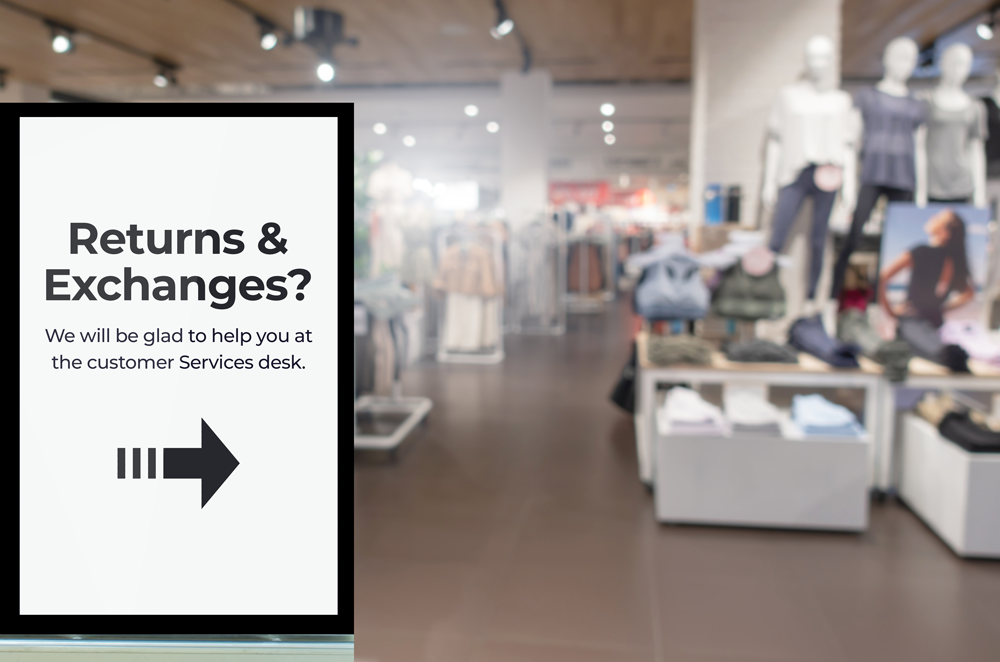Getting to the Root of Your Data
Getting to the Root of Your Data
Retailers are in a constant race to innovate faster, adjust to trends and adopt a digital future. Unfortunately, they often have a follow-the-leader mentality, which is fueled by looking into a rear-view mirror to determine a future destination. This one-size-fits-all mentality can never be a path to success for the multitude of consumer products available.

Before the digital age, it was understandable that businesses needed to base future decisions on past experiences. Successful retailers relied on the seasoned gut instinct of professionals in the field and hoped for the best. However, with the advent of artificial intelligence technology, this reliance on what happened last year to determine future direction is no longer needed, and in fact, can actually result in costly mistakes.
The BOPIS Bandwagon
Take one look around the industry, and it’s clear that just about every retailer is jumping on the buy online, pick up in store (BOPIS) strategy, which was primarily fueled by the lockdowns of the COVID-19 pandemic in 2020. Although BOPIS may make sense and be a smart move for some products and in some areas, this trend to convert retail stores into comprehensive distribution centers may be a dangerous and costly investment.
Let’s briefly consider the business models of some of the major retailer players. Big box stores such as Target and Walmart have the advantage of offering both groceries and things like gardening supplies and clothing. In order to successfully become a BOPIS distribution center, these players with a big physical footprint will need to provide enough diversity in products to warrant an in-person trip instead of simply buying online. Retailers who simply stock up stores often end up with slow-moving products catching dust when the customer experience has shifted to a new style that’s not in your assortment. Building out a full distribution supply chain in the changing room of a retail store is a losing game.

On the other end of the spectrum, Amazon has created an incredibly successful online retail business model, delivering just about anything, anywhere with its popular Prime service. Tight logistics management is the key to Amazon’s success, which explains why the company is investing in its own delivery system. Unlike the big box players, Amazon is struggling to find physical distribution points through partnerships with Whole Foods and its locker program to grab its share of the BOPIS market.
The fact that these retail leaders have not successfully figured out the BOPIS business model should serve as a warning to other players in the industry that a different direction may be warranted.
Understanding Customer, Company, and Market Data
Before making a major investment in BOPIS or any other strategy, it’s critical to get to the root cause analysis of your customer, company and market data. Who and where are your customers? What are their priorities? How and why are they behaving in particular ways? What influences their shopping journeys and where are they buying?
For example, many consumers in the Gen-Z demographic who live in urban areas may not have cars, cannot easily get to a store, yet have disposable incomes to spend. Before implementing a BOPIS program, retailers should consider whether their product is an urgent need that would warrant an in-person trip to a store or can easily wait 12-24 hours to be delivered. Perhaps next-day delivery at a lower price is more valued than same-day pick-up at a store for this demographic that finds physical store trips inconvenient. Consider the cost of stocking and delivering your products and whether same-day service is cost-effective in the long run.

Or, if your key demographic is the 30-year-old to 50-year-old professional with a disposable income and big basket needs, they are probably working from home during the pandemic and are unwilling to pack up their family to pick up a pair of jeans or a T-shirt at a store. It’s simply easier for them to wait a day or two and have exactly what they want delivered.
Remember that the last mile logistics battle has been fought (and lost) from DHL to the current race between FedEx, UPS, and the USPS. For retailers trying to control the supply chain, leaving that doorstep delivery to the experts will allow you the time to find innovations for that first mile of the customer journey.
BORIS Opportunities Strengthen Customer Loyalty, Build Business
One undervalued business opportunity today is the buy online, return in store (BORIS) process. Considering that 70% of all online orders are returned, BORIS is an opportunity for companies to grow and better understand their customer and sales numbers. Think of BORIS as the next frontier: your most valuable customer is someone who has already made a purchase.
First, make the return or exchange process as simple, seamless and convenient as possible. Skip the whys and wherefores; make it easy to get their money back and consider it a long-term investment in retaining that customer’s loyalty and future buying activity.

Second, remember that the return policy drives the purchase today. Free shipping is expected, and tracking, speed and flexibility are only factors. The bottom line is that if your customers know they can return products if they are not satisfied and get their money back without huge logistic hurdles, paper trails or explanations, they will buy from you. Capturing and retaining a loyal customer who has paid for a product creates an advantage that is critical to maintaining future sales.
Finally, BORIS allows you another key touchpoint for engagement and data collection about shopping behavior and the customer journey. Weave innovation and digital technology through every engagement, in every channel, keeping service at the forefront.
Get To The Root Of Your Data In Real Time
Hypersonix can help you get to the root cause analysis of your known customer demographics, your company information, and your market data. Using AI technology, Hypersonix processes current data in real-time, helping you make the best business decision for today and tomorrow–not yesterday.
Built with the latest innovations in augmented analytics, data science, ML and NLP, it incorporates a full array of descriptive, diagnostic, predictive, & prescriptive intelligence. Hypersonix customers enjoy a holistic understanding of what’s happening in their business, why it’s happening, and what they should do about it. The platform offers a simple, fast “Google-like” experience supported by “Jarvix,” a virtual assistant.
Designed for Retail, Restaurant, Hospitality, e-Commerce, Consumer Packaged Goods (CPG) and Brand Manufacturers. Hypersonix helps clients drive profitable growth, save money and improve customer engagement.
Want to know how you can make profitable decisions with Hypersonix? Request a free personalized demo today.
✎ by Tony Collier, Enterprise Sales Executive at Hypersonix, Inc.






